The Enchanting World of Cinnamon Cockatiel: A Bird Lover's Guide
Get ready to explore the wondrous world of the charming Cinnamon Cockatiel! We're going to show you how to properly care for, understand, and appreciate these amazing creatures - from talking about their behavior and talking capabilities to tips on how to create a cozy home.

Key Takeaways:
- Cinnamon cockatiels are a captivating color mutation within the cockatoo family, known for their unique cinnamon coloring and gentle temperament.
- Understanding the specific care requirements and behavior of cinnamon cockatiels can enhance the experience of both current and prospective cockatiel owners.
- Recognizing the differences in appearance between males and females, especially after the first molt, is essential for breeding and maintaining the health of these birds.
Cinnamon cockatiels are a delightful variation of one of the most popular pet birds in the world. With their warm, chocolate brown feathers and contrasting bright yellow face, they are a favorite among bird enthusiasts and pet owners alike. This comprehensive guide will delve into the world of cinnamon cockatiels, exploring their origins, care, behavior, and much more.
What Are Cinnamon Cockatiels?
Cinnamon cockatiels are part of the cockatoo family and are prized for their distinctive brown pigment, which gives them a softer appearance compared to the standard grey cockatiel. This color mutation is known as 'cinnamon' due to the warm, spicy tones that infuse their feathers. The cinnamon pied cockatiel and cinnamon pearl cockatiels are just two examples of the various patterns that can occur with this mutation.
These hardy birds are not just about looks; they also have a reputation for being friendly and easy to train. They can mimic sounds and are known for their playful cockatiel behavior, making them good pets for families and individuals alike.
The Origin of Cinnamon Cockatiels
Cinnamon cockatiels first appeared due to a sex linked recessive mutation that affected the grey pigmentation in their feathers. This mutation allows the brown pigment to become more prominent, resulting in the cinnamon coloring that sets these birds apart from other mutations within the species.
The first recorded appearance of this mutation was in the 1950s, and since then, bird breeders have continued to develop and refine the cinnamon trait, leading to the variety of patterns seen in pet stores and bird stores today.
Identifying Cinnamon Cockatiels
When trying to identify a cinnamon cockatiel, look for the overall plumage that is a soft, chocolate brown instead of the typical grey. The bright yellow face and orange cheek patch remain, but the yellow barring on the tail and wings is replaced with a pale yellow or brownish color. The isabelle cockatiel, another mutation, may sometimes be confused with the cinnamon due to similar pale coloring.
Young birds may not show the full extent of their cinnamon coloring until after their first molt, which is when their adult feathers come in. This is also the time when sexing cockatiels becomes easier, as males and females can exhibit different color patterns.
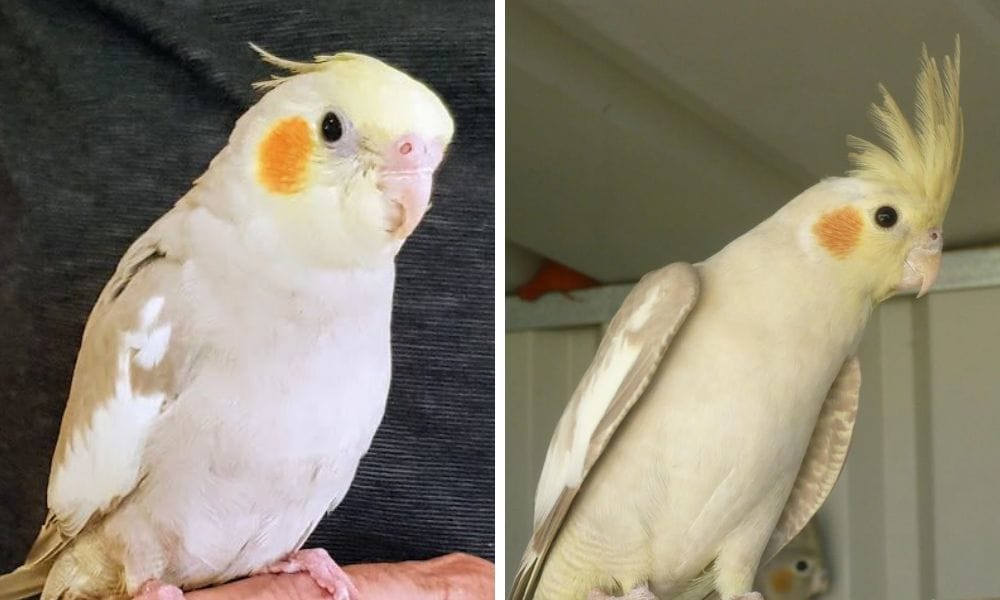
Caring for Your Cinnamon Cockatiel
Caring for a cinnamon cockatiel is similar to caring for any pet cockatiel. They require a spacious cage, a balanced diet, and plenty of social interaction to keep them happy and healthy. It's important to have their wings clipped regularly to prevent escape or injury, and to provide them with toys and perches to keep them entertained.
Cinnamon cockatiels are also known to be hardy birds, but like all pets, they need regular check-ups with a vet to ensure they remain in good health. A well-cared-for cockatiel can be a loving companion for many years. If you are looking for a new cockatiel cage you can find our blog on Top 5 Cockatiel Cages below.
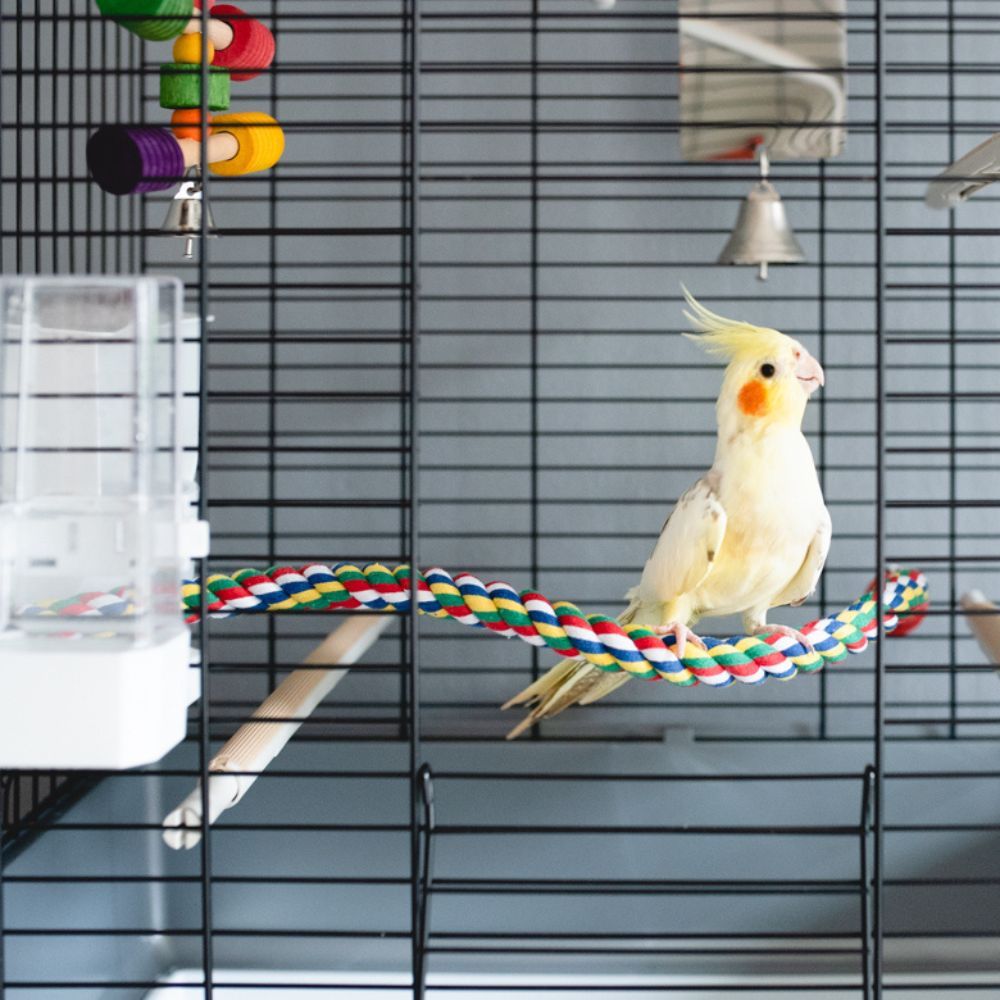
The Diet of Cinnamon Cockatiels
A proper diet is crucial for maintaining the health of cinnamon cockatiels. They thrive on a mix of high-quality cockatiel seed, fresh fruits, and vegetables. It's important to avoid foods that are toxic to birds, such as avocado, chocolate, and caffeine.
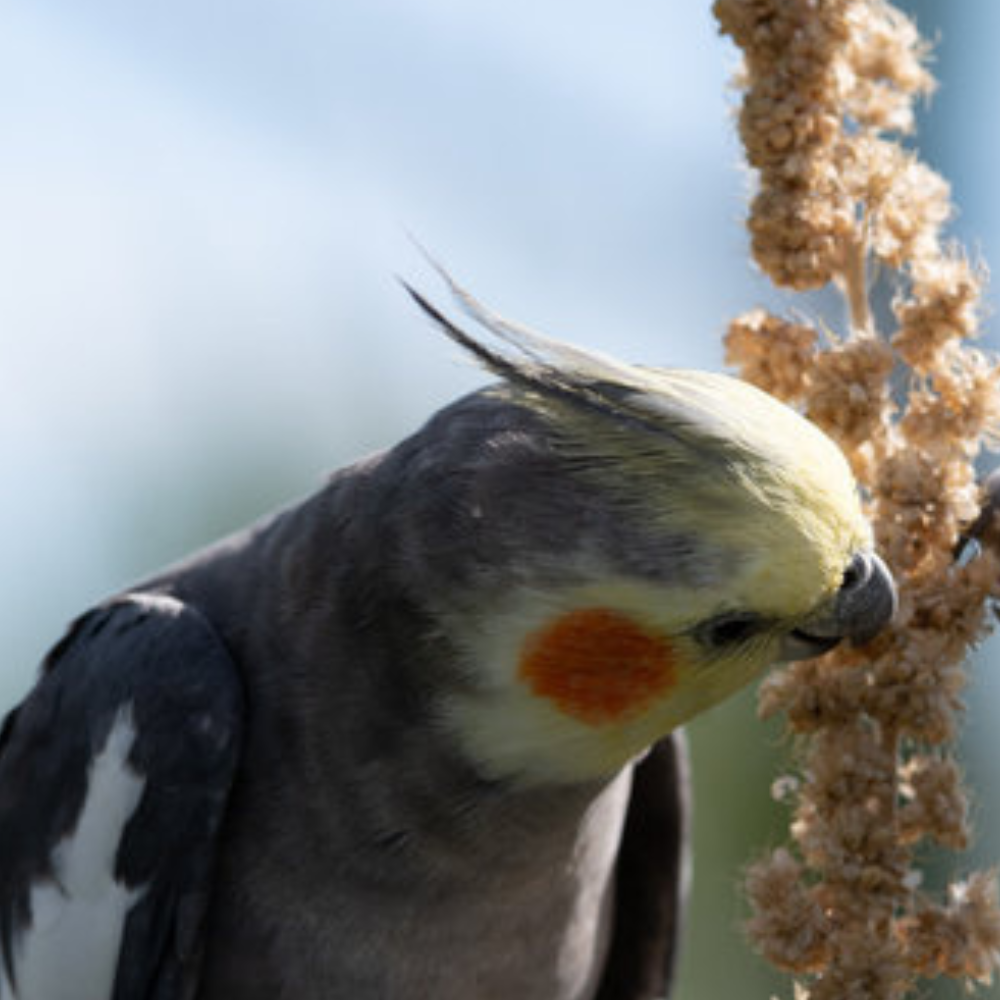
Supplementing their diet with vitamins and minerals can also help ensure that they receive all the necessary nutrients, especially if they are picky eaters. Always provide fresh water daily, and consider adding a cuttlebone to their cage to help with beak health and calcium intake.
Understanding Cinnamon Pearl Cockatiel Variations
Have you ever seen a cinnamon pearl cockatiel and found yourself completely mesmerized by its beauty? These pet birds are a feast for the eyes, with their intricate color mutations that set them apart from the standard cinnamon variety. The 'pearl' in their name refers to the speckled pattern on their feathers, which looks like tiny, scattered pearls. This pattern is especially prominent in females, and it can fade as they mature, often leading to a more solid coloration in males.
Interestingly, the pearl pattern is a result of a specific gene mutation, making each cinnamon pearl cockatiel unique. These birds are part of the parrot family, and their friendly demeanor makes them excellent companions. When looking at pictures of these birds, you'll notice the soft, warm hues that cover their bodies, and the delicate pearl markings that add an extra layer of allure. Breeders like Barbara Rost have been instrumental in popularizing these stunning variations, and their efforts have made the cinnamon pearl cockatiel a sought-after breed for bird enthusiasts. The Joy of Bonding with a Cinnamon Cockatiel Have you ever wondered what it's like to form a bond with a pet bird, especially a Cinnamon Cockatiel? These charming creatures are known for their sociable nature and can become incredibly attached to their human companions. When you spend long periods engaging with your Cinnamon Cockatiel, you'll notice the development of a unique bond. They thrive on interaction, whether it's through gentle petting, learning new tricks, or simply sharing moments together throughout the day.
Bonding with your Cinnamon Cockatiel is not just enjoyable but also beneficial for their emotional well-being. Like any pet bird, they require attention and love to feel secure and happy in their environment. By dedicating time to your feathered friend, you'll be rewarded with a loyal companion who eagerly awaits your presence. It's a heartwarming experience to come home to a Cinnamon Cockatiel that recognizes you, chirps delightedly at your arrival, and seeks your affection.
Raising a Baby Cinnamon Cockatiel Raising a baby Cinnamon Cockatiel is an adventure filled with rewarding milestones and learning experiences. From the moment you bring your baby bird home, you'll be tasked with ensuring it receives the proper care, nutrition, and socialization to grow into a healthy and well-adjusted pet. During the early stages, baby Cinnamon Cockatiels require a warm and safe environment, along with a diet that supports their rapid growth. It's crucial to monitor their development closely and provide them with plenty of opportunities to explore and play.
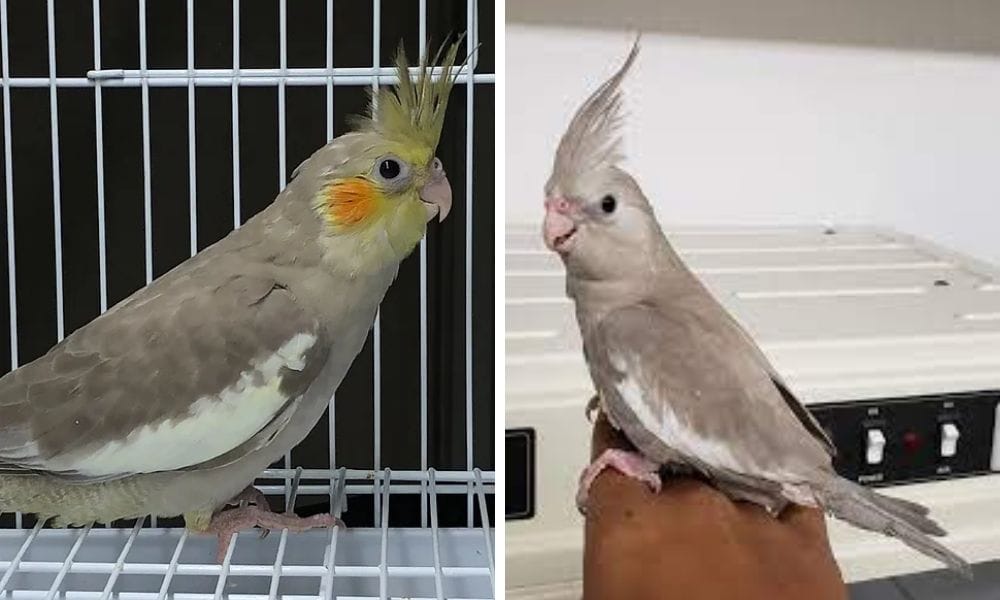
As your baby Cinnamon Cockatiel begins to mature, you'll witness the emergence of its personality and the deepening of your bond. These birds are known for their intelligence and can learn a variety of behaviors and vocalizations with consistent training. It's essential to establish a routine that includes regular interaction and mental stimulation to keep your baby Cinnamon Cockatiel engaged. Watching your pet bird grow and flourish under your care is a truly fulfilling experience that cements the bond between you and your feathered family member.
The Genetics Behind Cockatiel Mutations
Diving into the genetics of cockatiel mutations can be as fascinating as the birds themselves. For instance, the dominant silver cockatiel showcases a mutation that affects the color of their plumage, giving them a sleek, silvery appearance. This mutation is dominant, meaning that only one parent needs to carry the gene for it to potentially appear in their offspring. On the other hand, sex cockatiels, or those where the color mutation is linked to the sex chromosomes, can be more predictable when it comes to breeding outcomes.
The description cockatiels receive for their mutations, such as pastel face or white faces, often relates to the visual characteristics that are easily identifiable. These mutations can occur in various combinations, leading to a wide range of appearances within the breed. For example, a pastel face cockatiel might have a softer tone to its facial feathers, while white faces lack the typical orange cheek patches seen in wild types. It's important to note that while mutations like lutino or cinnamon can occur naturally, many of the variations we see today are the result of selective breeding practices aimed at enhancing certain desirable traits.
Breeding Cinnamon Cockatiels
Breeding cinnamon cockatiels can be a rewarding experience for bird breeders. Understanding the genetics behind the cinnamon mutation is important, as it is a sex linked recessive trait. This means that both parents must carry the gene for there to be a chance of producing cinnamon offspring.
When breeding these birds, it's also essential to monitor the health of the proud mom and her babies, ensuring they have a quiet, comfortable environment and a nutritious diet to support growth and development.
The Social Behavior of Cinnamon Cockatiels
Cinnamon cockatiels, like other cockatiel species, are social creatures that enjoy interaction with their human companions. They are known to form strong bonds with their owners and can become quite affectionate. Regular handling and socialization from a young age can help foster a trusting relationship.
These birds are also quite vocal and can learn to mimic sounds and even words with patience and consistent training. Their social nature makes them ideal pets for those who can dedicate time to interact with them daily.
Health and Longevity of Cinnamon Cockatiels
With proper care, cinnamon cockatiels can live for a long time, often reaching 15 to 20 years of age. Regular veterinary check-ups, a balanced diet, and a clean living environment are key factors in ensuring their longevity.
It's also important to be aware of common health issues that can affect cockatiels, such as respiratory infections, obesity, and nutritional deficiencies. Early detection and treatment are crucial for the well-being of these birds.
Training Your Cinnamon Cockatiel
Training a cinnamon cockatiel can be a fun and rewarding process. These intelligent birds are capable of learning a variety of tricks and commands. Start with simple tasks like stepping up onto your finger and gradually move on to more complex tricks.
Positive reinforcement, such as treats and praise, is the best method for training. Consistency and patience are key, as some birds may take longer to learn than others. Remember to keep training sessions short and enjoyable for your feathered friend. If you want to train your cockatiel to wear a harness you can see our blog below.
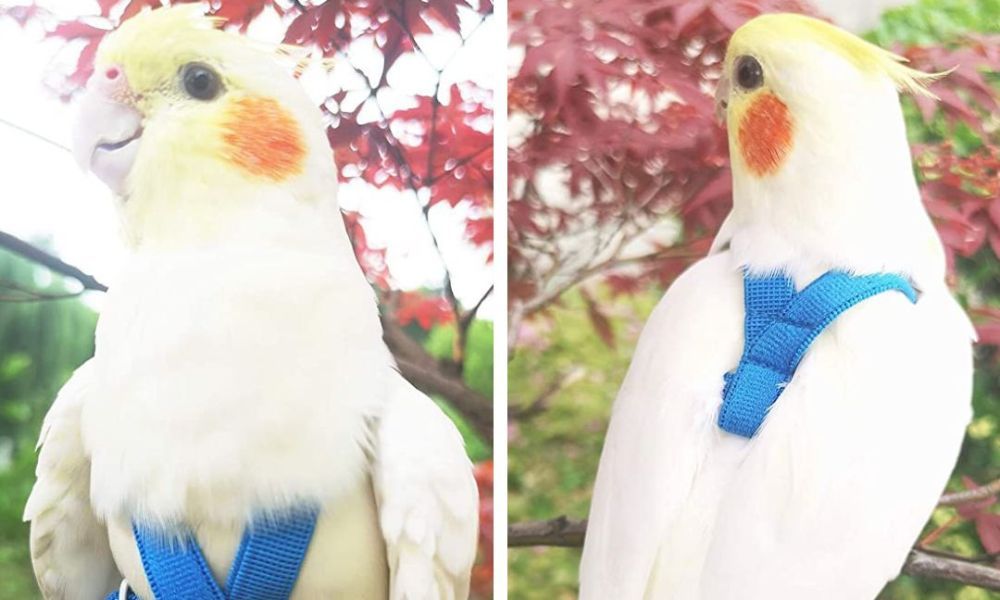
The Unique Coloring of Cinnamon Cockatiels
The cinnamon coloring of these cockatiels is not just aesthetically pleasing; it's also unique to each bird. The intensity of the brown pigment can vary, resulting in a range of shades from a light, pastel-like brown to a deeper, richer chocolate brown. This variation adds to the appeal of cinnamon cockatiels, making each one a one-of-a-kind companion.
The unique coloring is typically higher priced than other mutations due to its popularity and the breeding expertise required to produce it. However, many owners find the extra cost worthwhile for the joy these beautiful birds bring.
Cinnamon Cockatiels as Family Pets
Cinnamon cockatiels make excellent family pets due to their friendly nature and manageable size. They are less demanding than larger parrots but still provide the same level of companionship and entertainment. Their ability to adapt to different environments and their playful behavior make them suitable for households with children, as long as interactions are supervised to ensure the safety of both the bird and the child.
When introducing a cinnamon cockatiel to a family setting, it's important to educate all members on proper handling and care to prevent accidents and ensure the bird's well-being.
Common Questions About Cinnamon Cockatiels
Q: How can I tell if my cinnamon cockatiel is male or female? A: After the first molt, male cinnamon cockatiels typically have a brighter yellow face and may lose the pale yellow or brown barring on their tail feathers, while females retain these markings. DNA testing is the best bet for accurate sexing, especially in young birds.
Q: Are cinnamon cockatiels good for first-time bird owners? A: Yes, cinnamon cockatiels are considered one of the best options for first-time bird owners due to their gentle nature, ease of care, and ability to form strong bonds with humans.
Q: How often should I let my cinnamon cockatiel out of its cage? A: Cinnamon cockatiels, like all pet birds, need time outside of their cage for exercise and mental stimulation. It's recommended to allow them out for supervised playtime for at least an hour each day, in a safe, bird-proofed area.
Summary
Cinnamon cockatiels are a charming and captivating variety within the cockatoo family, known for their cinnamon coloring and friendly disposition. They make excellent pets for both novice and experienced bird owners, offering companionship and the opportunity for interactive play. With proper care, a balanced diet, and regular social interaction, these birds can thrive and bring joy to their owners for many years. Whether you're a seasoned bird enthusiast or considering your first feathered friend, a cinnamon cockatiel could be the perfect addition to your family.

